For guitarists and musicians seeking to enhance their sound, a comprehensive understanding of a pedalboard is essential.
This guide provides detailed information on selecting the appropriate pedals and their respective functions, as well as a step-by-step process for constructing your own pedalboard.
It further encompasses best practices for organizing and wiring your setup, alongside strategies for troubleshooting common issues.
Whether one is a beginner or a seasoned professional, this guide offers valuable insights to enrich the musical journey.
What is a Pedalboard and Why Do You Need One?
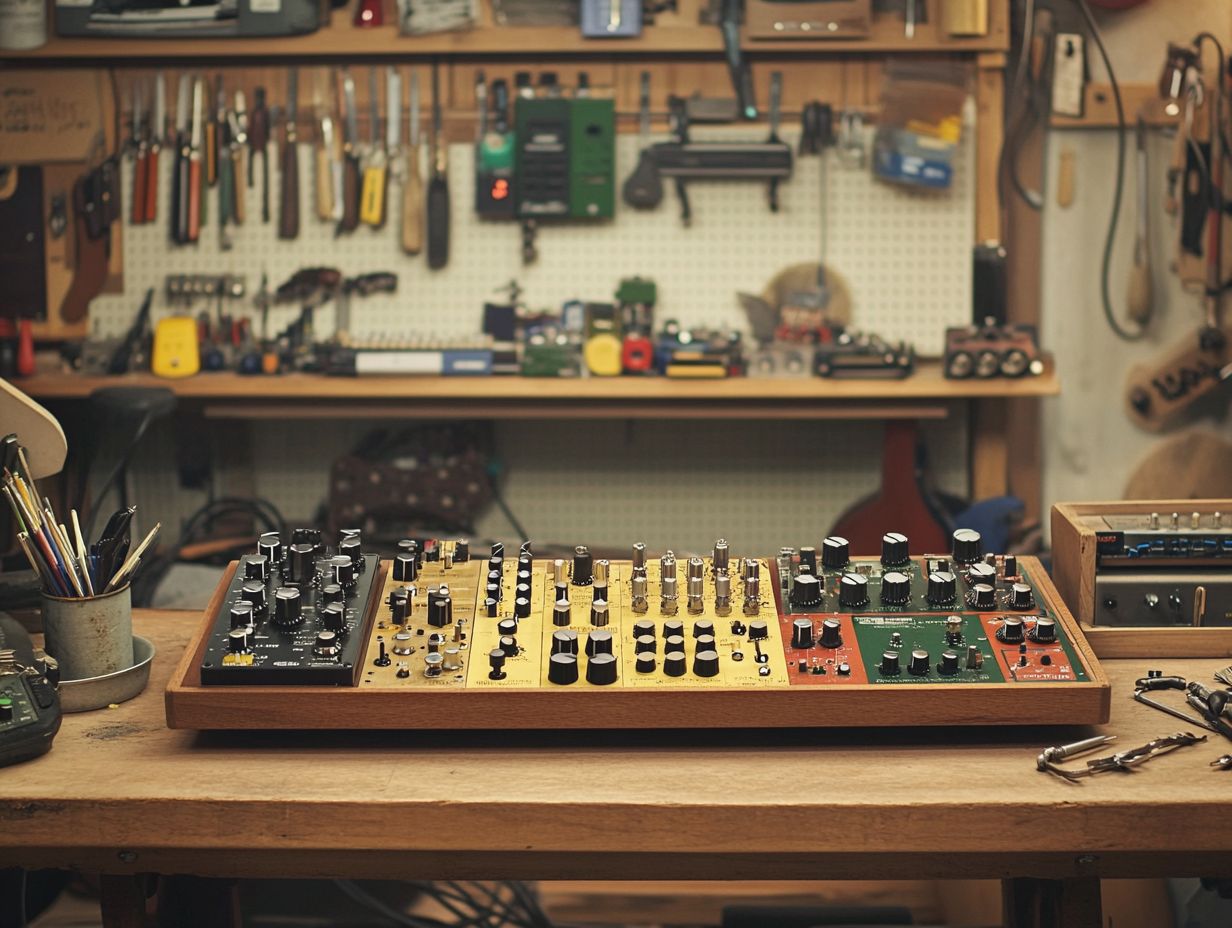
A pedalboard is a crucial component of music equipment that offers a structured platform for organizing guitar pedals, ensuring efficient signal routing and enhancing overall sound quality.
Whether one is an electric guitar enthusiast, a bassist, or a professional musician, a well-designed pedalboard can significantly improve performance setups, enabling better tone shaping and sound quality.
It streamlines the use of effects pedals, reduces cable clutter, and facilitates quick setups during live performances or studio sessions. Given the variety of designs, materials, and layouts available, it is essential to select a pedalboard that is tailored to one’s specific gear preferences.
Choosing the Right Pedals
Selecting the appropriate guitar pedals is a crucial step for any guitarist aiming to achieve their desired tone and enhance their music production.
With a wide array of pedal types available, such as distortion, reverb, and modulation effects, it is essential to understand how each pedal contributes to the overall sound.
Additionally, the incorporation of pedal switches and effects loops can significantly improve your pedalboard setup, facilitating creative audio effects chaining and seamless transitions during live performances.
This meticulous selection process ensures that the pedalboard is not only functional but also customized to meet the specific needs of musical expression.
Types of Pedals and Their Functions
A comprehensive understanding of the various types of effects pedals and their unique functions is essential for any guitarist aiming to enhance their sound. Effects pedals can be broadly categorized into specific types, including distortion, delay, reverb, modulation, and dynamic effects, each of which modifies the guitar’s signal in distinct ways.
For example, distortion pedals amplify the sound to produce a gritty, overdriven tone, while delay pedals create echoes that can add depth to a performance. Mastering the effective combination of different pedal types can facilitate innovative sound exploration and tonal variations.
- Distortion pedals, such as the renowned Boss DS-1, are fundamental for rock and metal genres, providing the crunchy edge that propels a track forward.
- Delay pedals, exemplified by the popular MXR Carbon Copy, deliver lush repeat effects that enrich solos or rhythm parts by layering sound.
- Reverb pedals, including the Strymon Blue Sky, create a sense of space and atmosphere, allowing even the simplest notes to resonate as if performed in a grand hall.
- Moreover, modulation effects, like the Electro-Harmonix Small Stone, introduce texture through chorus and flanger sounds, transforming basic chords into more vibrant sequences.
- Dynamic effects, such as compressors and wah pedals, impact the signal’s volume and tone, enabling techniques such as expressive swells and vocal-like phrases.
Successfully integrating these pedals on a pedalboard necessitates strategic planning to achieve a seamless and versatile sound, thereby assisting guitarists in crafting their signature tone.
How Many Pedals Do You Need?
Determining the appropriate number of pedals for a pedalboard setup involves consideration of several factors, including musical style, performance requirements, and available space. While some guitarists may find satisfaction with a limited selection of essential effects pedals, others may prefer a more elaborate configuration that intricately layers multiple effects to achieve a distinctive sound.
It is crucial to evaluate the dimensions of the pedalboard and how the pedals will integrate into the signal chain to ensure optimal sound quality. Striking a balance between functionality and performance needs will assist in identifying the ideal number of pedals.
Personal preferences significantly influence this decision-making process. Some musicians may opt for a minimalist approach, prioritizing quality over quantity, while others might be inspired by a wide variety of sounds and textures.
The context of the performance—whether in an intimate acoustic venue or a larger rock festival—also affects the selection of pedals. Larger events may necessitate additional effects to accommodate diverse sonic requirements, whereas a more intimate setting might benefit from a simpler sound.
Ultimately, each guitarist’s journey in creating the perfect pedalboard is a unique experience shaped by these interconnected elements.
Building the Pedalboard
Constructing a pedalboard is a rewarding endeavor that enables guitarists to tailor their setups to meet their individual requirements and preferences.
A meticulously designed pedalboard harmonizes aesthetics, functionality, and durability, ensuring that musical equipment is not only organized but also safeguarded during transport.
Selecting appropriate materials—such as wood or metal—in addition to robust mounting hardware can profoundly influence the overall quality and longevity of the pedalboard.
Whether one chooses to create a custom pedalboard or acquire a pre-assembled pedalboard case, comprehending the fundamental aspects of construction is essential for establishing an effective performance gear arrangement.
Materials and Tools Needed
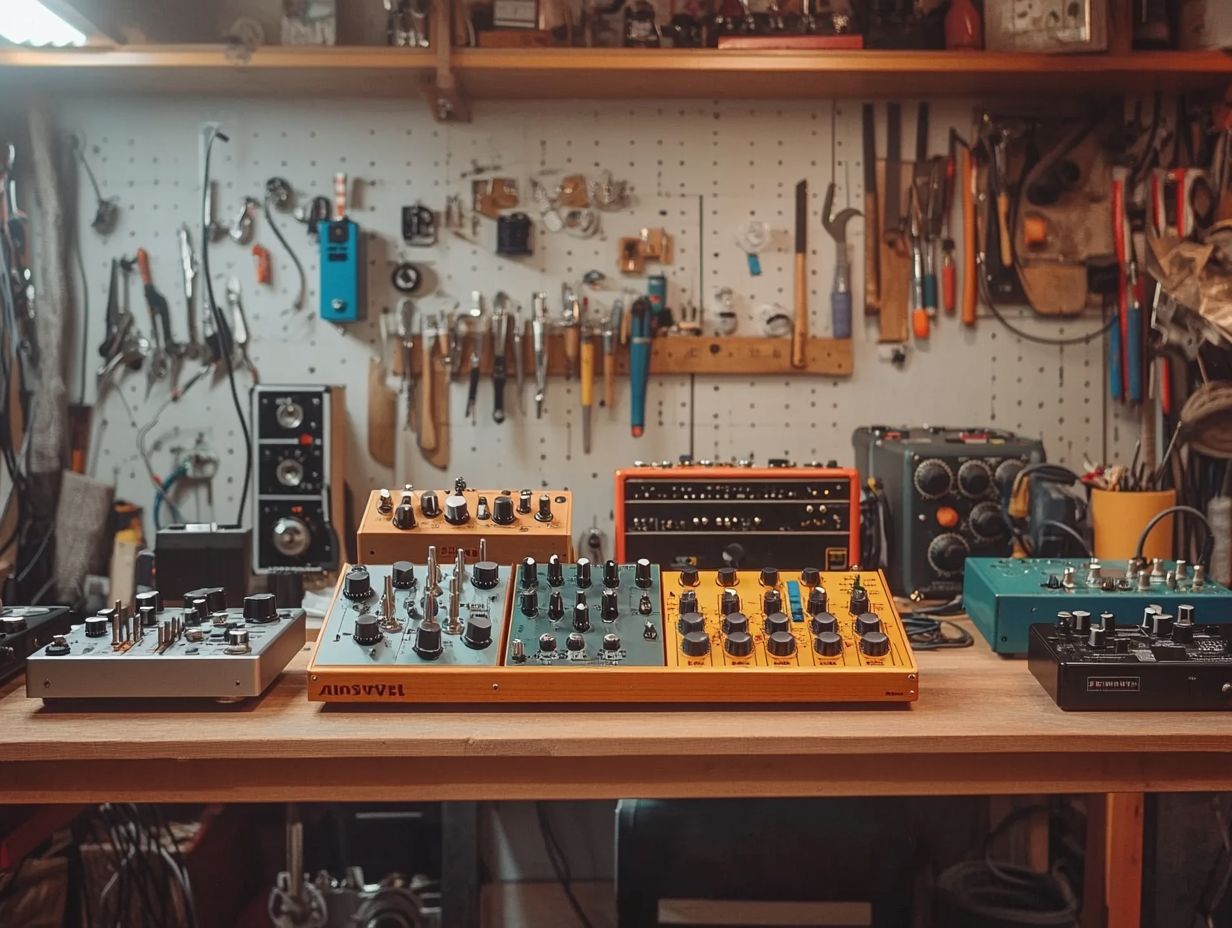
When constructing or customizing a pedalboard, selecting appropriate materials and tools is crucial to ensure both durability and effective cable management. Common materials used for pedalboards include wood, metal, and plastic, each presenting distinct advantages in terms of weight, portability, and aesthetic appeal.
Utilizing the correct tools for assembly—such as a soldering iron for wiring and Velcro for securing pedals—will facilitate the process and improve the overall functionality of the setup. Additionally, proper cable management tools, including patch cables and cable ties, are essential for maintaining a clean and organized pedalboard layout.
Wood is frequently preferred for its natural appearance and robustness; however, it may be heavier and less portable compared to plastic. Metal pedals are recognized for their durability and sleek design, making them a favored choice among professional musicians, though they may require additional maintenance to prevent rust. Conversely, plastic alternatives are lightweight and generally more cost-effective, though they may not offer the same substantial feel as their wooden or metal counterparts.
During the assembly of the board, essential tools include:
- A drill or screwdriver
- A cable tester to verify connectivity
- Zip ties for efficient cable binding
Incorporating cable wraps or labeled organizers can further enhance both aesthetics and accessibility, ensuring that musicians can transition smoothly between different settings.
Step-by-Step Guide
Creating a pedalboard setup involves a systematic, step-by-step process that ensures effective wiring and organization of the pedals. It is essential to begin by planning the pedal order according to the audio effects chain, as this will significantly influence sound quality and functionality.
Following this, the pedals should be wired with care, ensuring that signal integrity is maintained throughout the setup. Recognizing that a quick setup is critical for live performances, it is advisable to test the arrangement and make any necessary adjustments before finalizing the configuration. Incorporating maintenance practices for the pedalboard will also contribute to keeping everything in optimal condition.
Understanding that each effect serves a distinct purpose can further enhance the overall sound. For example, distortion pedals are typically most effective when placed before modulation effects, while delays generally perform best at the end of the signal chain.
Once the order has been established, utilizing high-quality patch cables and securing them properly will help reduce unwanted noise and interference. It is also recommended to label both pedals and power supplies for easy identification during performances.
Regular cleaning of connections, along with occasional re-evaluation of the pedal order, can extend the lifespan of the equipment and ensure that each performance resonates as intended.
Organizing and Wiring the Pedalboard
The effective organization and wiring of a pedalboard are essential for maintaining sound integrity and optimizing performance equipment. A well-structured pedalboard layout facilitates easier access during live performances while ensuring efficient signal routing that minimizes noise and interference.
Utilizing high-quality patch cables and following proper wiring protocols are critical for achieving optimal sound quality and reducing noise. Additionally, comprehending the interactions between different pedals can significantly enhance the overall setup, enabling creative sound design and modulation during performances.
Placement and Order of Pedals
The placement and order of pedals on a pedalboard significantly influence the overall sound and performance setup. When arranging pedals, it is important to consider the principles of effects chaining, as this will determine how each effect interacts with the others and ultimately shapes the desired tone.
A common guideline is to position gain-based pedals, such as overdrive and distortion, before modulation effects like chorus and delay. This strategic arrangement helps maintain signal integrity while facilitating creative sound exploration during live performances.
Placing time-based effects such as reverb towards the end of the signal chain can enhance the depth and ambiance of the sound without introducing muddiness. For example, positioning a reverb pedal before a distortion effect may diminish the clarity of the reverb, resulting in a less defined tone.
It is also advantageous to experiment with different placements, as some performers have discovered unique sounds by deviating from conventional practices.
Additionally, utilizing high-quality patch cables can further enhance signal integrity and overall performance, ensuring that each pedal contributes harmoniously to the desired sonic landscape.
Best Practices for Wiring
Implementing best practices for wiring a pedalboard is crucial for achieving optimal signal integrity and ensuring a seamless performance. Effective cable management not only organizes the setup but also minimizes the potential for noise and interference during operation.
By utilizing cable ties or sleeves, musicians can maintain their wiring in a neatly bundled manner, thereby reducing the likelihood of electromagnetic interference that could compromise sound quality. It is also advantageous to use shorter cables whenever feasible, as longer runs can introduce unwanted capacitance, consequently degrading the signal.
When selecting cables, it is advisable to prioritize those with superior insulation and shielding to further mitigate noise.
For an improved pedal switching experience, positioning the pedals in a logical order based on their function can streamline performance and decrease switching times. Ultimately, a well-organized and thoughtfully wired pedalboard not only enhances sound quality but also instills greater confidence in the performer during live performances.
Troubleshooting and Maintenance
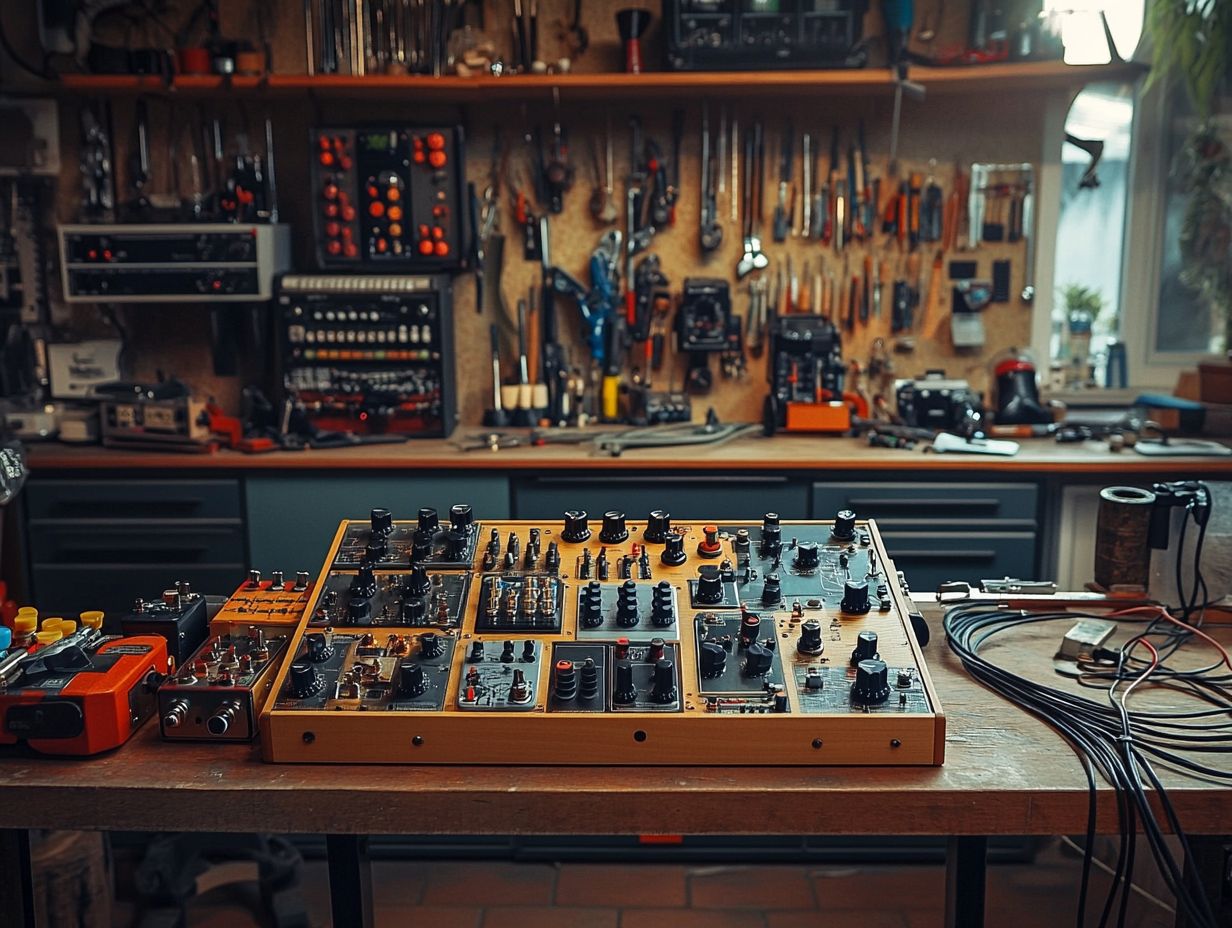
Regular troubleshooting and maintenance of a pedalboard are essential for ensuring long-lasting performance and optimal sound quality. Understanding how to identify common issues, such as signal loss, noise interference, or pedal malfunctions, will greatly enhance the experience of any guitarist.
By establishing a proactive maintenance routine that includes checking connections and cleaning pedals, one can maintain signal integrity and ensure that each component functions effectively. This diligent approach allows musicians to concentrate on their artistic expression during performances.
Common Issues and How to Fix Them
Guitarists frequently encounter common issues with their pedalboards, and possessing the ability to troubleshoot these problems can be instrumental in salvaging a performance. Issues such as signal loss, unwanted noise, and pedal malfunctions can arise from various factors, including faulty wiring, poor connections, or even the use of incompatible pedals.
By systematically examining each component and adhering to proper wiring practices, one can effectively diagnose and resolve these challenges while enhancing the performance capabilities of the pedalboard.
A thorough understanding of how different components interact is essential; for example, the order of pedals can profoundly influence the overall sound. During the troubleshooting process, verifying power supply compatibility and maintaining consistent ground connections can eliminate a considerable number of issues. Additionally, it is prudent to regularly inspect cables for signs of wear and tear, as these can lead to intermittent failures.
By implementing these troubleshooting techniques, guitarists can greatly improve the reliability of their setups, ensuring that each performance proceeds smoothly and is enjoyable for both the musician and the audience.
Cleaning and Maintaining Your Pedalboard
Cleaning and maintaining a pedalboard is crucial for preserving the sound quality and longevity of music equipment.
Neglecting this important aspect can result in the accumulation of dirt and dust, which may hinder the performance of individual pedals. Regularly wiping down surfaces and utilizing a compressed air canister to eliminate debris from difficult-to-reach areas will help ensure that the sound remains as pristine as intended.
Implementing effective cable management techniques, such as employing Velcro straps or dedicated clips, can significantly reduce signal interference while contributing to a more organized appearance.
Additionally, proper pedal organization facilitates quick access during live performances, enabling seamless transitions between effects. A well-maintained pedalboard not only enhances technical efficiency but also conveys a professional image to the audience.
Frequently Asked Questions
How do I choose the right size pedalboard?
When selecting the size of your pedalboard, consider the number of pedals you currently own and the potential for expansion in the future. Measure the dimensions of your pedals and add a few inches to ensure they all fit comfortably on the board.
What materials do I need to build a pedalboard?
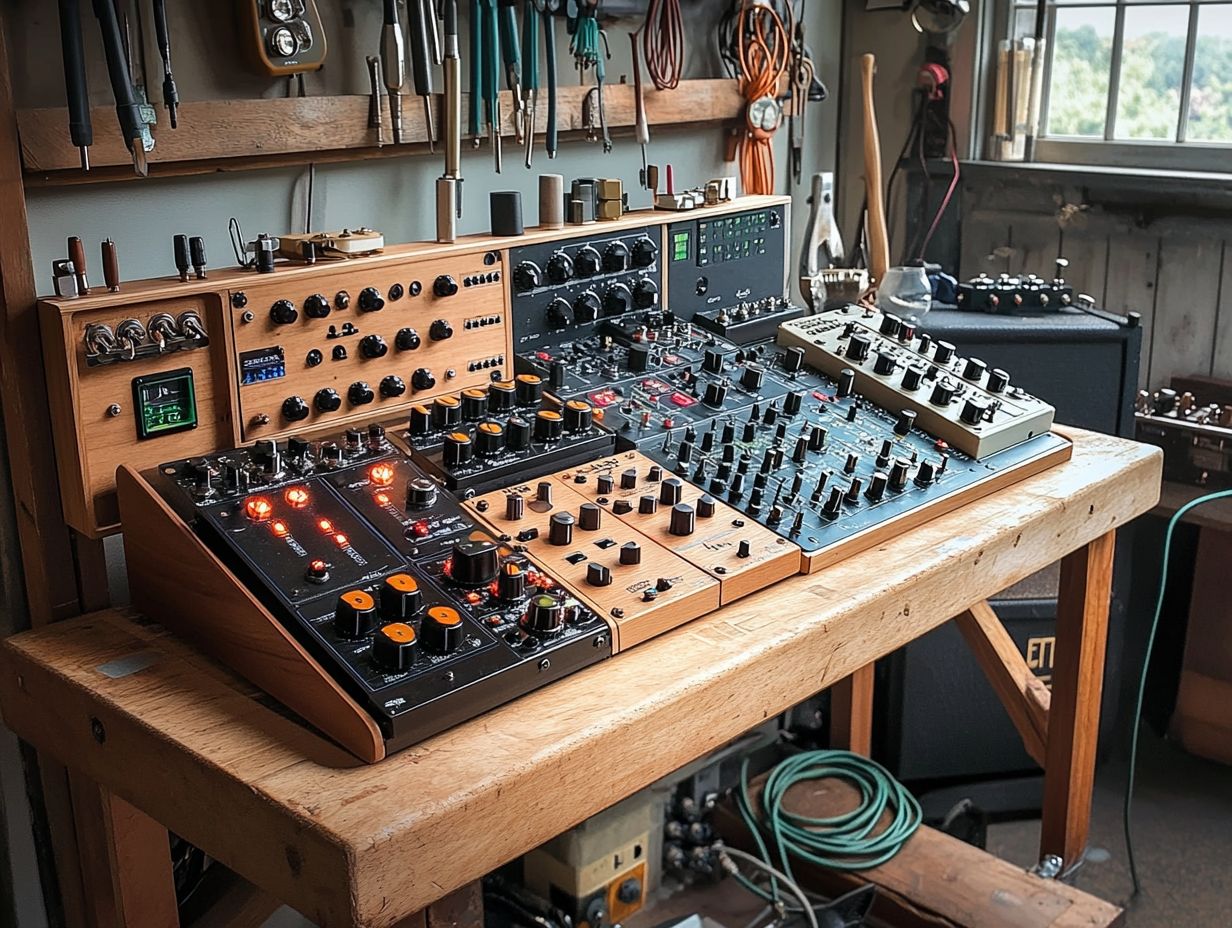
To build a basic pedalboard, you will need a sturdy board, velcro or adhesive, cable ties, a power supply, and a drill. You may also want to consider adding a case or bag for transporting your pedalboard.
Can I use any power supply for my pedalboard?
It is important to use a power supply specifically designed for guitar pedals, as regular power supplies may not provide the correct voltage and can damage your pedals. Look for a power supply with isolated outputs to avoid unwanted noise and interference.
How should I arrange my pedals on the board?
The most common arrangement is to place the pedals in a line from left to right, with the input of the first pedal on the left and the output of the last pedal on the right. However, you can experiment with different arrangements to find what works best for your sound and playing style.
What is the best way to secure my pedals to the board?
Using velcro or adhesive is the most popular method for securing pedals to a pedalboard. Place the velcro on the bottom of the pedal and on the board, making sure to leave enough room for cables to be plugged in. Alternatively, some pedalboards come with built-in pedal mounts or brackets for a more secure hold.
How can I protect my pedals while traveling with my pedalboard?
If you plan on traveling with your pedalboard, it is important to invest in a case or bag to protect your pedals. Look for options with padding and compartments to keep your pedals safe and organized during transportation.

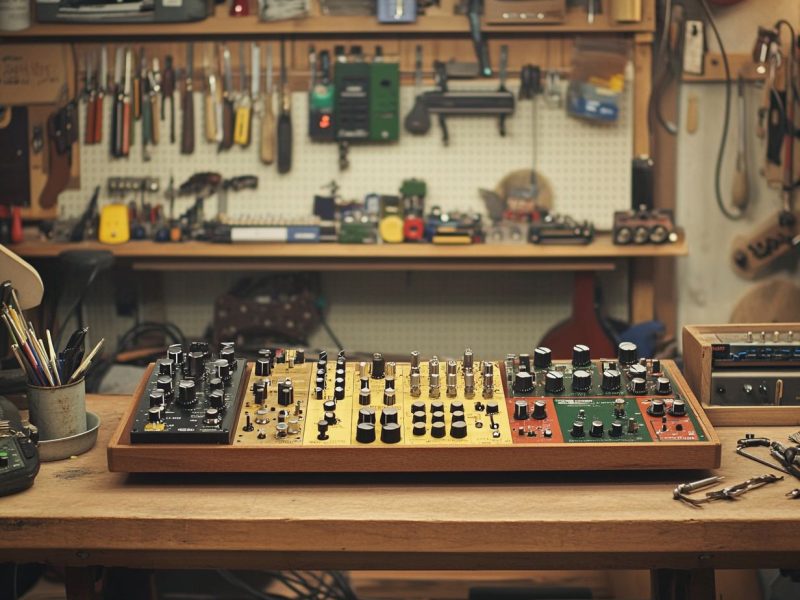
 Mastering Guitar Pedals: A Beginner’s Guide
Mastering Guitar Pedals: A Beginner’s Guide